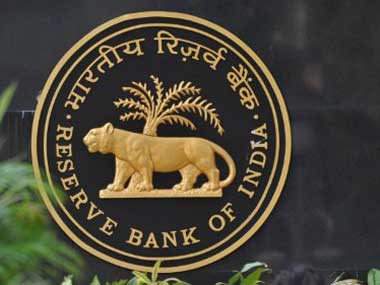Most analysts have begun pegging GDP growth estimates at around 7 percent for FY12 (2011-12) and FY13 (2012-13), following the latest growth figures of 6.9 percent for the second quarter of FY12 announced earlier this week. The figures are down significantly from 7.7 percent in the first quarter.
While the 6.9 percent figure was largely on expected lines given the signs of slowdown, all eyes are on Reserve Bank Governor Duvvuri Subbarao and Mint Road mandarins once again. The expectations are that, with investment slowing down, an unwinding of the interest rate cycle has now become an imperative. The Reserve Bank of India is to unveil its Mid-quarter Review of Monetary Policy on 16 December.
Kotak Mahindra Bank, for instance, maintains its growth estimate for FY12 at 7.1 percent and pegs it at 6.9 percent for the year after that. However, Indranil Pan, chief economist of the bank, says he does not see any immediate chance of the RBI moving away from its anti-inflationary stance just yet.
[caption id=“attachment_147070” align=“alignleft” width=“380” caption=“While the 6.9 percent figure was largely on expected lines given the signs of slowdown, all eyes are on Reserve Bank Governor Duvvuri Subbarao and Mint Road mandarins once again. AFP”]  [/caption]
“The market buzz now is on the chances that the RBI softens its monetary stance, especially asChinahas reduced its reserve ratios (effective from 5 December) by 50 basis points (0.5 percent). Given that headline inflation inIndiais still at 9.7 percent, and with the recent bout of rupee depreciation, any change in the RBI’s monetary policy stance is still way off,” reasons Pan.
While forecasting GDP growth to be at 7 percent for FY12, Goldman Sachs, on the other hand, is betting on the Reserve Bank of India easing interest rates around April 2012, if not earlier. The Goldman Sachs argument is based on the estimate of potential growth being at 7.6 percent.
“With actual growth coming in well below potential, there are disinflationary pressures in the economy. We, therefore, expect inflation to fall to 6 percent by March 2012. We expect the Reserve Bank of India to continue to ease liquidity, first through open market operations, and then by cutting the reserve requirements of banks. We expect the RBI to cut interest rates by 100 bps (1 percent) in 2012, starting in April. The slowdown in growth and the trajectory of inflation suggests to us that an earlier easing of policy rates may be appropriate, especially given the severe external headwinds,” Goldman Sachs’ Tushar Poddar says in his analysis.
Citi India’s Rohini Malkani is also of the view that the RBI will have to start easing policy rates, given the slowdown. “Determined policy action is key to prevent risks of sub 7 percent GDP in FY13,” says Malkani. Given global and domestic issues, domestic growth expectations have come down from 9 percent to 7 percent, with growing doubts on whether even a 7 percent number can hold, adds the Citi report.
“While India faces additional headwinds on account of its forex dependence, with inflation peaking, we expect the RBI to begin easing rates by 1H (first half) 2012. This, coupled with some determined decision-making from policymakers, could provide economic and investment gains and keep growth from falling below 7 percent levels.” A modest revival in capex (capital expenditure) growth is key to a 7 percent GDP number, the report adds.
Pegging its FY12 GDP growth estimate at 7.2 percent and the initial estimate of FY13 at 6.9 percent, Motilal Oswal says the growth slowdown clearly coincides with rate hikes. “Hence, at first reading, it might appear that the rate hike had greater impact on growth than inflation which remained high at around 9 percent level.”
Pointing out that the industrial slowdown would remain a major drag for overall growth, the report says such loss in momentum could take growth to a lower level of 7 percent earlier than anticipated. “In particular, revival of industrial activity is critical for the growth decline to be arrested at the current level,” it says.
Pointing out that the unwinding of rate hikes would be critical, the report saysthe trend in investment remains the key monitorable and its upturn would require both an unwinding of the interest rate cycle and an improvement in investment climate.


)
)
)
)
)
)
)
)
)



